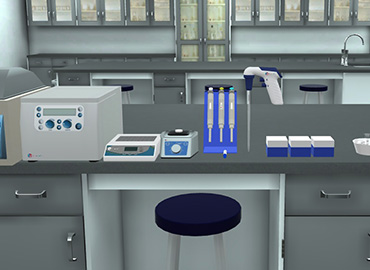DNA Cloning Experiment: Isolation and Restriction Digestion of DNA
Biology | Biochemistry | Genetics | Microbiology






2.5M+
Active Users Worldwide
80%
Improved Learning Retention
60%
Reduction in Laboratory Costs
DNA isolation using purification columns in a gene cloning experiment. DNA digestion using restriction enzyme EcoRI.
By the end of the DNA Cloning Experiment, students will be able:
5’ GAATTC 3’ after 5’ G AATTC 3’
3’ CTTAAG 5’ restriction 3’ CTTAA G 5’
At DNA Cloning Experiment:




